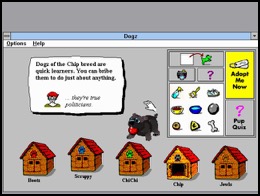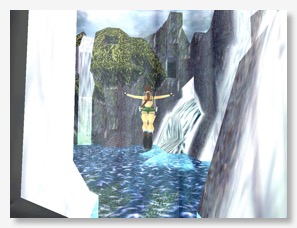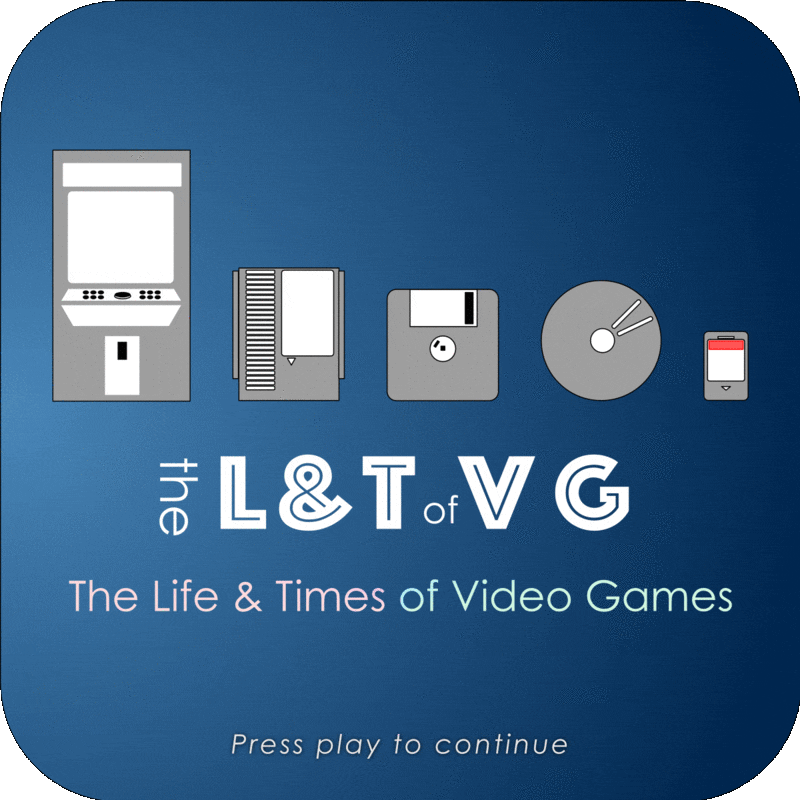23 Nov 2018
On the 90s girl games movement, and its assault on the status quo of the video game market, featuring Girl Games Inc founder and former filmmaker Laura Groppe.
See full show notes and episode player…Tags: game design, girl games, laura groppe, brenda laurel, business, theresa duncan, barbie, mattel, teen digital diva, marketing, 90s gaming
01 Nov 2018
Before something like the Xbox could ever hope to exist, Microsoft first needed to learn how to be a successful games publisher on the PC. This is the story — or part of it — of how Microsoft got games, featuring input from four key Microsoft Game Studios people — Ed Fries, Stuart Moulder, Ed Ventura, Jon Kimmich — and Age of Empires co-creator Rick Goodman.
See full show notes and episode player…Tags: microsoft, pc, ed fries, jon kimmich, ed ventura, stuart moulder, age of empires, flight simulator, xbox, close combat, games publishing, rick goodman, business, marketing
01 Sep 2018
Jon Kimmich worked as a "product planner" and "program manager" in Microsoft's games group in the late 1990s and then in Microsoft Game Studios until 2004. He's since continued to work in bizdev roles in the games industry and has lots of fascinating insights (I posted a different quote on Twitter during the week).
Here he tells us about knowing when a game has that "magic" that means it's going to be a hit, with Halo and Age of Empires as examples.
See full show notes and episode player…Tags: age of empires, halo, jon kimmich, microsoft, pc, xbox, business
19 Jul 2018
On June 11th, 2018, character designer and artist Shoji Mizuno passed away. He was a key figure back in the 1990s at the now-defunct Hudson Soft, a renowned Japanese games publisher — having directed art or design, or sometimes both, on more than a dozen games in the popular Bomberman franchise as well as providing original character designs for the Beyblade anime series.
Since this year is also the 35th anniversary of the release of the first Bomberman game on the MSX, I thought now would be a good time to look back on how the explosive puzzle franchise made its way into the world — and into the hearts of millions.
See full show notes and episode player…Tags: game design, bomberman, hudson soft, shoji mizuno, japanese games, multiplayer games, eric and the floaters, dynablaster
14 Jun 2018
Frustrated by the unjustified furore that surrounded his tame interactive movie game, designer Rob Fulop turned to Santa for help. And with a clever business model he and his team at PF Magic invented a new kind of game, one in which you adopt and care for a digital animal — a virtual dog or cat, or something more exotic, with a personality and needs and quirks not unlike a real one.
See full show notes and episode player…Tags: game design, catz, dogz, hexing, night trap, petz, pf magic, rob fulop, simulation, virtual pets, us congressional hearings into video game violence
28 Mar 2018
On the late Mike Singleton and the importance of Midwinter and The Lords of Midnight, his two great works. After switching from high school English teaching to professional game development in the 1980s, Mike quickly rose to the top of the industry. His games pushed the limits of what was possible, and he routinely crafted worlds that were way ahead of their time.
Here, based on archival research and old magazine interviews, I present part of his incredible story.
See full show notes and episode player…Tags: game design, amiga, atari st, midwinter, mike singleton, open world, the lords of midnight, british games
18 Feb 2018
Continuing the story from Part 1, this is how the original Tomb Raider's grid-based engine/level editor impacted on the series, on Lara Croft's rise to fame, and on the shifting sands of blockbuster game development. This episode also discusses the place that such a grid system has — or might have — in game design today. Featuring input from former Core Design artists and level designers Heather Stevens and Andy Sandham as well as programmer Gavin Rummery.
See full show notes and episode player…Tags: game design, 3D, core design, lara croft, level editors, tomb raider, gavin rummery, heather stevens, andy sandham, toby gard
23 Dec 2017
Every aspect of the original Core Design Tomb Raider series (and by extension the franchise's success post-Core) comes back to the grid that lies beneath it — the majority of the puzzles; the platforming; the cavernous chambers and ruins and outdoor areas that provide a sense of isolation, of solitude and discovery; and Lara Croft's iconic acrobatic movement style.
And yet it never would have happened if not for one pragmatic choice made by a programmer early in the game's development.
This is the story of how that came to be, and how it made Tomb Raider…well, Tomb Raider, based on interviews with Heather Stevens (née Gibson) and Gavin Rummery as well as my past work covering Tomb Raider's history as a freelancer.
See full show notes and episode player…Tags: game design, 3D, lara croft, tomb raider, toby gard, heather stevens, gavin rummery, core design, level editors
11 Nov 2017
At the dawn of emulation and the World Wide Web, a group of fans discovered the Nintendo and Super Nintendo games that never made it over from Japan. One of them decided to hack into a few of these and translate them, unofficially, with help from some friends — starting with Final Fantasy II for the NES.
Featuring quotes from Steve Demeter, founder of one of the first fan translation groups, Demiforce, who was the driving force behind three high-profile ROM hacks — the Final Fantasy II and Radical Dreamers translation projects, and the Earthbound Zero prototype release.
See full show notes and episode player…Tags: chrono trigger, demiforce, earthbound, emulation, fan translations, final fantasy, nes, radical dreamers, rom hacking, super nintendo, steve demeter
04 Nov 2017
The story of a cancelled X-Men TV controller game, as told by former LucasArts illustrator Mark Ferrari, who is a world-renowned and innovative pixel artist responsible for popularising multiple graphical techniques — including dithering, colour cycling, and palette shifting. And an inside look at the downside of having marketing-focused gatekeepers in charge of what products hit store shelves.
See full show notes and episode player…Tags: 8-bit, art, business, cancelled games, mark ferrari, marketing, tv game, x-men, colour cycling, palette shifting, dithering
23 Oct 2017
A story from the dawn of 3D sports games, and the forgotten link between the 16-bit isometric and 32-bit 3D EA Sports games — this is how FIFA 3DO transformed the way sport was represented in video games.
See full show notes and episode player…Tags: game design, 3D, fifa, ea sports, isometric, marc aubanel, soccer, sports games, 3DO
15 Oct 2017
How a marketing guy at shareware game publisher Ambrosia Software ended up eating bugs in front of hundreds of people at Macworld New York 2000.
See full show notes and episode player…Tags: ambrosia software, bugs, cythera, jason whong, mac, macworld, marketing, PR, shareware
01 Oct 2017
This is the story of illustrator Mark Ferrari, whose artwork was so good it forced Lucasfilm Games to figure out how to make a graphics technique called dithering compress to fit on floppy disks — in the process winning awards and triggering the use of dither in the wider games industry — and who pioneered the use of two background illustration tricks that gave the illusion of animation. He became world-renowned for his colour cycling and palette shifting techniques, which could be used to make a single computer illustration appear alive.
See full show notes and episode player…Tags: graphic adventures, colour cycling, deluxe paint, dithering, art, gary winnick, loom, lucasarts, lucasfilm, mark ferrari, palette shifting, scumm, seize the day, thimbleweed park, illustration
16 Sep 2017
The story of the one of the earliest flight simulator games, Airfight, a favourite among the PLATO community back in 1973, based on an interview with its creator. Airfight was a multiplayer flight combat sim with wireframe graphics and real-time chat, and it was an influence on the first home computer flight simulator, subLOGIC's fittingly-named 1980 game Flight Simulator for the Apple II and TRS-80.
See full show notes and episode player…Tags: game design, airfight, brand fortner, bruce artwick, flight simulator, multiplayer games, plato, silas warner, simulation, sublogic
10 Sep 2017
An extended interview with Pocket Gamer co-founder Jon Jordan, who these days writes mostly about the business of mobile games at Pocket Gamer's sister site PocketGamer.biz. These full interview postings will normally be
for Patreon backers only, but since I've only just launched the show I thought it'd be good to give you a taste of what you'll be getting when you make a monthly pledge of $3 or more.
We covered a lot of ground in the interview — far more than I could fit into the
Race to the Bottom episode. And Jon had some great insights into how the business and design of iOS gaming has evolved over time.
Listen for talk about how surprising it was to see the iPhone become a great games platform, what the early days of iPhone gaming were like, how the business and design of iOS gaming has evolved over time, and what's likely to be in store for the future of the App Store.
See full show notes and episode player…Tags: app store, bonus content, iphone, jon jordan, mobile games, pocket gamer
06 Sep 2017
In the early days of the iPhone App Store, game developers found themselves locked in a race to a $0.99 price point that none of them wanted to become standard. This is the story of how that happened, and how it affected mobile games going forward.
See full show notes and episode player…Tags: airwings, app store, brian greenstone, enigmo, iphone, mobile games, pangea, pocket gamer, marketing, business





